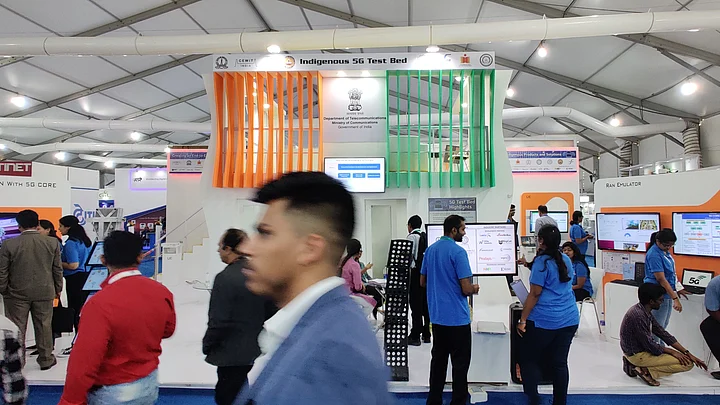This week at the India Mobile Congress (IMC) 2019 in Delhi, one thing became evident. Most telcos and solution providers are ready to enter the 5G arena in the country, only if the government decides to change its stance on how 5G will be brought over to India.
According to industry leaders, spectrum auction and pricing are two biggest concerns that need to be addressed for faster 5G roll out. And even though, Ravi Shankar Prasad, Union Minister of Communications and IT has given assurances about changing its stance on 5G spectrum prices, the industry would now like some action to be taken.
However, while the spectrum auctions are likely to be done within the current financial year, as confirmed by Prasad, analysts don’t see major 5G movements happening in the country, at least for the next few years.
A joint KPMG-COAI report, released at the IMC 2019 also claims that 5G is most likely to see widespread adoption only by 2025 in the country. And till then, over 600 million broadband subscribers will have to manage with existing networks.
Are the Telcos Ready?
Telcos like Airtel, Vodafone Idea are struggling with low revenues, and falling monthly tariffs which has eroded into their profits over the past few years. Which is why, you’re seeing public admission from top honchos at these telcos, looking to get some break from the government, to make 5G spectrum affordable for the companies to bid.
Telecom operators have always complained that compared to the rest of the world, airwaves in India are priced exorbitantly. Sunil Mittal, Chairman, Bharti Airtel in February said that Airtel would not buy any spectrum at the base prices suggested by the telecom regulator in the 3,300-3,600 MHz band.
According to brokerage firm CLSA quoted in a report, “5G spectrum in India is priced at an 'exorbitant' $7 billion per 100 MHz, which is nearly four times of that in Korea, and will be big drag on companies" Internal Rate of Return (IRR).
If you discount the uncertainty around Huawei’s active participation in the Indian 5G sector, other companies like Samsung, Ericsson and Qualcomm are seemingly ready to push ahead, if the telcos are ready at their end.
Virtues of Moving to 5G
To make sense of the value that 5G brings to the table, telcos and even companies like Cisco have been talking about the use cases of the next generation connectivity in the country.
“There is a good chance that 5G will transform the agriculture sector in India. For example, 5G may enable driver-less tractors, for which you do not need proper lanes as chances of accidents in fields will be less,” said Sanjay Kaul, Head - Asia Pacific and Japan, Service Provider Business, Cisco, quoted in IANS report.
Reliance Jio said that a spectrum auction should not be seen as a money generating mechanism, while adequate quantity of 5G radio waves should be provided to ensure the optimal exploitation of 5G technology.
Once the 5G commercial networks are switched on, the first use cases would be to enhance the mobile broadband speeds, which will eventually trickle down to smartphone users. The improvement will also be felt in fixed wireless internet segment.
“But to enjoy the benefits of 5G, the whole ecosystem has to fall in place. Spectrum has to be auctioned, and fibre has to be in place and we will also need the devices,” Nitin Bansal, Head of Ericsson India was quoted saying in another IANS report.
Focus on the Present
Highlighting upon the current scenario, Mathew Oomen, President - Networks, Reliance Jio said, “a 5G device today is about $1000 higher. It is all about the eco system, not just deployment. There 21 devices like that across the world.”
He also emphasised on the need to make things clear about how India plans to go about building its way to mainstream 5G network.
“Those are in millimetres that we are still not clear when they will auction and how much. There is a lot of non-clarity on 5G which need to be removed," Oomen added
According to the latest Ericsson Mobility Report, LTE (4G) is forecast to represent 82 percent of mobile subscriptions by the end of 2024 compared with 38 percent in 2018. This growth is mostly going to come from people using 2G devices right now, and who will eventually decide to migrate to 4G in the coming years.
All this means only one thing. Instead of focusing on bringing 5G to the country, the existing networks need to be improved. Which implies that most likely, ‘you’ and ‘I’ are going to continue using 4G on mobile for the foreseeable future, with 5G remaining in the picture with a minor role to play for a while.
(With inputs from PTI and IANS)
(At The Quint, we question everything. Play an active role in shaping our journalism by becoming a member today.)
